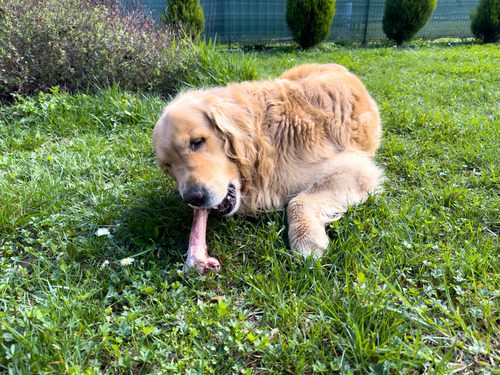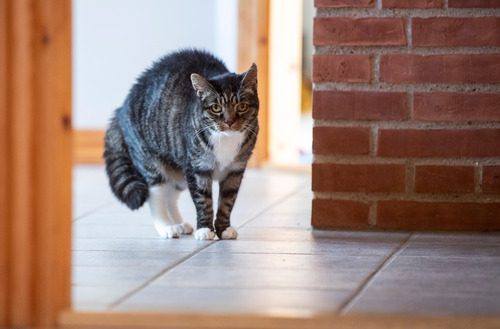Do Dogs Have Night Vision?
Have you ever noticed the way your dog seems to notice movement in the dark before you do? Does this make you wonder whether or not your dog can see in the dark? Have you ever asked yourself, “do dogs have night vision?” If you have, you’re not alone, and this article will be a valuable resource in helping you learn more about how your dog’s vision.

Many pet owners wonder about the way the world looks through the eyes of dogs. As a matter of fact, dogs do have night vision, in that they’re able to see at nighttime and in dark places. In the article below, we’ll help you get a better understanding of the way your dog sees at night, so you can recognize their strengths and their needs on your nighttime walks.
How Do Dogs Have Night Vision?
Now that you know that dogs are able to see at night and in the dark, you may be asking yourself how or why that is.
6 reasons how and why dogs have night vision include:
1. Dogs See Color Differently
Before we dive into understanding the way dogs see light and darkness, it’s important to learn more about how they see color. Humans have more cones in their eyes than dogs do, which means we see more color than dogs. A dog’s perception of color is a lot like that of a human who has red-green color blindness.
Because of this lack of color perception, the world looks more washed-out and grayer to a dog than it does to many humans. This lack of color, however, makes it easier for dogs to notice changes in lighting that indicate movement.
2. Dogs Have a Wide Field of Vision
Because most dogs have eyes on the sides of their head, or further spaced apart than humans’ eyes, they have a wider field of vision than humans do. Their depth perception and peripheral vision are both different, and they use these differences to better improve the way they can see in low lighting conditions.
Your dog can perceive a lot more of what’s going on around them at night than you can simply because their eyes are positioned differently from yours. This positioning also helps your dog see better during the day, too, and it is part of what makes dogs so good at hunting.
3. Dogs’ Eyes are Reflective
Another reason why dogs have night vision is because their eyes are reflective. Dogs have a reflective portion of their eyes called the tapetum. This is a group of cells that sits behind the dog’s retina. The tapetum is what causes a dog’s eyes to look reflective when you see them in the darkness, and it is also what causes the same effect in cats.
The tapetum is basically a mirror of cells that reflects light and allows a dog’s eyes to pick up more light than they would otherwise be able to see. It is capable of increasing your dog’s visual sensitivity.
4. Dogs See Flickering Light
While humans do not perceive individual flickers of fast-moving light very well, dogs do. For example, the flickers of a television screen are imperceptible to most humans and in most situations, but dogs can see these movements constantly flickering due to their perception of light.
When your dog is outside at night or in low light, they can notice the slightest movements that may affect the way light flickers in their field of vision. This is why dogs are good at hunting and chasing prey in the darkness—they can notice the movement of their prey against even the slightest amount of light.
5. Dogs See More Dim Light than Humans
A dog’s eyes have more rods than a human’s eyes. This means that dogs can pick up considerably more light than humans can, and can see better in low-lighting situations. When you’re outside in the early dawn or late dusk with your dog, they are able to see a lot more of the remaining light than you are.
This is one of the factors that contribute to the myth of dogs being able to “see in the dark.” Your dog cannot see in the pitch dark, but they can see in the near-dark a lot better than you can!
6. Dog’s Vision Comes from Wolves
Finally, a reason that explains why dogs do have night vision is that their vision comes from wolves. Since dogs have evolved from wolves, their vision has, too. Wolves are active during dusk, and they do most of their hunting during this low-light time of day. Their eyes, therefore, can perceive movement and changes in lighting from a long distance.
Your dog may not do much hunting for their own food like their ancestors, but they still have many of the same features that come from wolves.
Dogs Do Have What Can be Described as “Night Vision”
With the help of this information, you should have a more thorough understanding of the way your dog sees—especially at night. This article only scratches the surface of canine nighttime vision, however, so be sure to do some more digging and learn more if you’re interested in the science behind your dog’s sight.
If you notice any changes in the way your dog sees or behaves when you’re outdoors with them at night, you may want to talk to your veterinarian. As dogs age, their vision changes just like a human’s might, and it’s important to keep up with your dog’s changing needs.
If you’re still wondering how do dogs have night vision, or if you have more questions about your dog’s vision, book an appointment at any of our Heart + Paw locations. Our veterinarians are not only here to help ensure your pet stays as healthy as possible, but they’re also available to answer any questions you may have about your pet in general.
Recent Posts
Can Dogs Eat Ham?
Ham is a popular meat found on many dinner tables, especially during the holidays. As a dog…
8 Signs and Symptoms of Diabetes in Dogs
Caring for a dog means being tuned in to the subtle changes that can reveal their overall…
Why Dogs Can’t Eat Chocolate and Tips for Keeping This Sweet Treat Out of Their Reach
Chocolate is a beloved indulgence for us, but for our dogs, it’s a hidden danger that can…
Why Cat Teeth Cleaning is Important For Your Pet’s Health
As a cat owner, you know how important it is to care for your feline friend’s overall…
Cat Body Language: A Guide To Understand What Your Cat is Telling You
Imagine trying to communicate without words, relying solely on subtle gestures, glances, and movements. This is how…
About Us
Heart + Paw was founded in 2018 by Chief Veterinary Officer Dr. George Melillo, who currently serves the Mid-Atlantic area. Heart + Paw offers a combination of veterinary care, pet grooming, and dog daycare to help be a resource in your pet parenthood journey.
We'd Love to Meet Your Four-Legged Friends
Find out how the friendly veterinary team at your local Heart + Paw can help your pets live longer, healthier lives by searching for a location near you.





